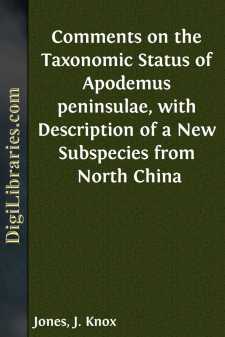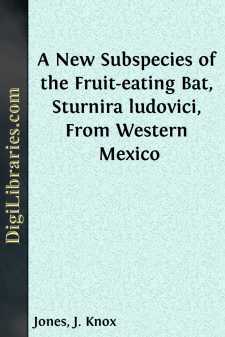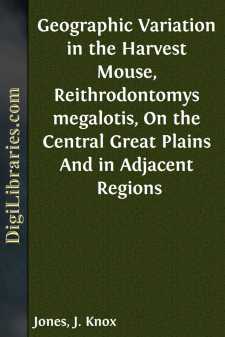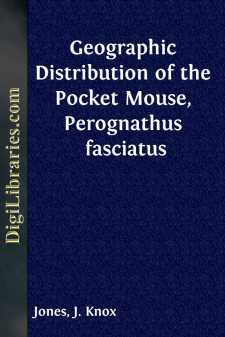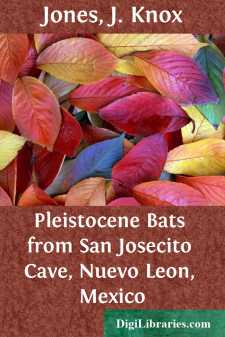Categories
- Antiques & Collectibles 13
- Architecture 36
- Art 48
- Bibles 22
- Biography & Autobiography 813
- Body, Mind & Spirit 142
- Business & Economics 28
- Children's Books 16
- Children's Fiction 13
- Computers 4
- Cooking 94
- Crafts & Hobbies 4
- Drama 346
- Education 46
- Family & Relationships 57
- Fiction 11829
- Games 19
- Gardening 17
- Health & Fitness 34
- History 1377
- House & Home 1
- Humor 147
- Juvenile Fiction 1873
- Juvenile Nonfiction 202
- Language Arts & Disciplines 88
- Law 16
- Literary Collections 686
- Literary Criticism 179
- Mathematics 13
- Medical 41
- Music 40
- Nature 179
- Non-Classifiable 1768
- Performing Arts 7
- Periodicals 1453
- Philosophy 64
- Photography 2
- Poetry 896
- Political Science 203
- Psychology 42
- Reference 154
- Religion 513
- Science 126
- Self-Help 84
- Social Science 81
- Sports & Recreation 34
- Study Aids 3
- Technology & Engineering 59
- Transportation 23
- Travel 463
- True Crime 29
Noteworthy Records of Bats From Nicaragua, with a Checklist of the Chiropteran Fauna of the Country
by: J. Knox Jones
Description:
Excerpt
Nicaragua occupies a strategic position in Central America with respect to mammalian distributional patterns, but relatively little has been published concerning the fauna of the country and its zoogeographic relationships. The present paper records information on distribution, variation, and natural history of 40 species of bats from Nicaragua, 14 of which are here recorded for the first time from the country. Appended is a checklist of the chiropteran fauna of Nicaragua in which only primary literature with actual reference to specimens from the republic is cited.
The specimens upon which this report is based are, with few exceptions, in the collections of the Museum of Natural History of The University of Kansas. Some of our material was obtained in 1956 by J. R. and A. A. Alcorn, field representatives of the Museum and sponsored by the Kansas University Endowment Association; most of the specimens, however, were obtained by field parties of which we were members that worked in Nicaragua in 1964, 1966, 1967, and 1968 under the aegis of a contract (DA-49-193-MD-2215) between the U.S. Army Medical Research and Development Command and The University of Kansas. Place-names associated with localities mentioned in the text from which specimens at Kansas were collected are plotted on Fig. 1.
Fig. 1.—Map of Nicaragua showing location of place-names associated with specimens reported in this paper. Localities, identified by number, are as follows: I, PotosÃ; 2, Cosigüina; 3, Hda. Bellavista, Volcán Casita; 4, Chinandega; 5, San Antonio; 6, Jalapa; 7, Condega; 8, YalÃ; 9, Santa MarÃa de Ostuma; 10, San Ramón; 11, Matagalpa; 12, DarÃo; 13, Esquipulas; 14, Santa Rosa; 15, Boaco; 16, Teustepe; 17, Tipitapa; 18, Sabana Grande; 19, Managua; 20, Cuapa; 21, Villa Somoza; 22, Hato Grande; 23, Diriamba; 24, Guanacaste; 25, Mecatepe; 26, Nandaime; 27, Alta Gracia, Isla de Ometepe; 28, Mérida, Isla de Ometepe; 29, Rivas; 30, San Juan del Sur; 31, Sapoá; 32, Bonanza; 33, El Recreo; 34, Cara de Mono.
In the accounts that follow, departments in Nicaragua are listed alphabetically, but localities within each department are arranged from north to south; elevations are given in meters or feet, depending on which was used on specimen labels. All specimens are in the Museum of Natural History of The University of Kansas unless noted otherwise. We are indebted to Drs. Charles O. Handley, Jr., and Ronald Pine of the U.S. National Museum (USNM) for lending us certain critical specimens.
Curator, Division of Mammals, Museum of Natural History, University of Kansas.
Assistant Professor, Department of Biology, California State College, Fullerton, California.
Assistant Professor, Department of Biology, St. Benedicts College, Atchison, Kansas.
ACCOUNTS OF SPECIES
Saccopteryx leptura (Schreber, 1774)
Two specimens from El ParaÃso, 1 km N Cosigüina, 20 m, Chinandega, on the Cosigüina Peninsula, provide the fourth locality of record for this white-lined bat in Nicaragua. Jones (1964a:506) and Davis et al. (1964:375) earlier reported a total of eight specimens from the departments of Managua and Zelaya. The species is known as far north in Middle America as Chiapas (Carter et al., 1966:489).
Our two bats, both females, were shot on the evening of 1 March 1968 as they foraged around a yard light. One carried an embryo that measured 8 mm (crown-rump), whereas the other was reproductively inactive.
Peropteryx macrotis macrotis (Wagner, 1843)
Four females (one young and three adult) captured 5 km N and 9 km E Condega, 800 m, in Madriz, on 23 June 1964, provide the first record of this small sac-winged species from Nicaragua....



